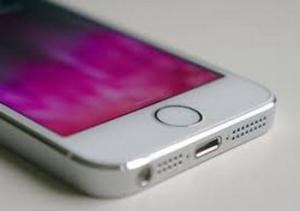EarthquakesSmartphones app creates worldwide seismic network
UC Berkeley scientists last week released a free Android app that taps a smartphone’s ability to record ground shaking from an earthquake, with the goal of creating a worldwide seismic detection network that could eventually warn users of impending jolts from nearby quakes. The app, called MyShake, is available from the Google Play Store and runs in the background with little power, so that a phone’s onboard accelerometers can record local shaking any time of the day or night.

Smartphones can become part of a seismic network // Source: commons.wikimedia.com
UC Berkeley scientists last week released a free Android app that taps a smartphone’s ability to record ground shaking from an earthquake, with the goal of creating a worldwide seismic detection network that could eventually warn users of impending jolts from nearby quakes.
UC Berkeley reports that the app, called MyShake, is available from the Google Play Store and runs in the background with little power, so that a phone’s onboard accelerometers can record local shaking any time of the day or night. For now, the app only collects information from the accelerometers, analyzes it and, if it fits the vibrational profile of a quake, relays it and the phone’s GPS coordinates to the Berkeley Seismological Laboratory for analysis.
Once enough people are using it and the bugs are worked out, however, UC Berkeley seismologists plan to use the data to warn people miles from ground zero that shaking is rumbling their way. An iPhone app is also planned.
“MyShake cannot replace traditional seismic networks like those run by the U.S. Geological Survey, UC Berkeley, the University of Washington and Caltech, but we think MyShake can make earthquake early warning faster and more accurate in areas that have a traditional seismic network, and can provide life-saving early warning in countries that have no seismic network,” said Richard Allen, the leader of the app project, director of the Berkeley Seismological Laboratory and a professor and chair of the Department of Earth and Planetary Sciences. The lab operates a sensitive but widely spaced network of seismic sensors buried in vaults around Northern California
A crowdsourced seismic network may be the only option today for many earthquake-prone developing countries, such as Nepal or Peru, that have a sparse or no ground-based seismic network or early warning system, but do have millions of smartphone users.
“In my opinion, this is cutting-edge research that will transform seismology,” said UC Berkeley graduate student Qingkai Kong, who developed the algorithm at the heart of the app. “The stations we have for traditional seismology are not that dense, especially in some regions around the world, but using smart phones with low-cost sensors will give us a really good, dense network in the future.”
